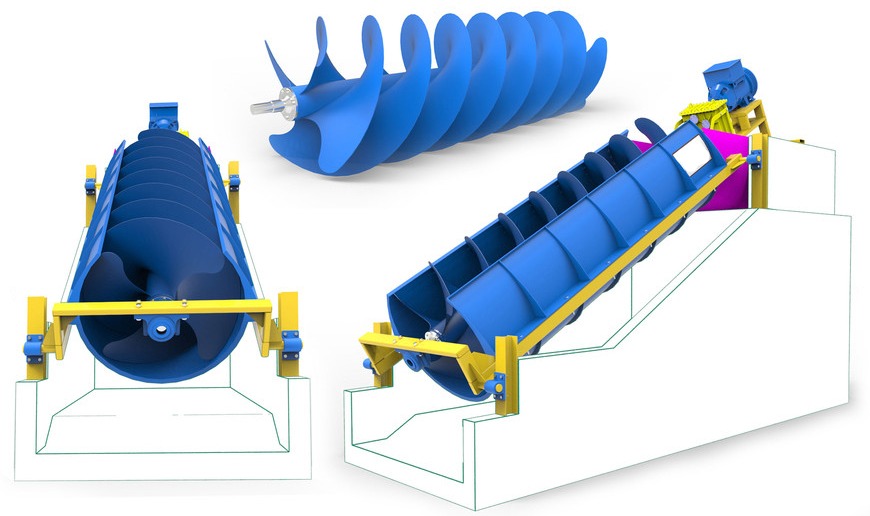Screw Turbine
Renewable energies are derived from nature and can be produced constantly. The high demand for energy and environmental protection programs have led to the formation of green energy facilities that are both efficient and sustainable. Among the best types of green energy is the energy from flowing water, and the best device for converting this energy into electricity is the Archimedean screw turbine. Archimedean screws, when driven by flowing water, can be used to generate energy, in which case they are referred to as screw turbines.
A screw turbine is fundamentally a hydraulic machine that converts the kinetic energy of water into mechanical energy and then into electrical energy. This device is installed in the flow path of the river and uses the weight of the water as a driving force.
Advantages of Screw Turbines Compared to Other Types of Water Turbines
They do not need a sophisticated control system, unlike other turbine types.
They do not require filters for high efficiency, and they do not disturb the river ecosystem.
They offer high efficiency and reliable performance.
The turbine has a very long lifespan, especially when operating at low speeds.
No fine mesh screens are needed to prevent debris from entering the turbine.
History of the Screw Turbine
The Archimedean screw is an ancient invention attributed to Archimedes of Syracuse. It was typically used to lift water from lower to higher levels. In 1819, French engineer Claude-Louis proposed using the Archimedean screw as a type of water wheel. In 1916, Moerscher was the first to patent the screw turbine in the United States.
Hydroelectric Power Plants
Hydropower is one of the most effective and reliable renewable energy sources, playing a major role in creating a sustainable future. Dams are crucial tools for controlling, storing, managing, and utilizing water. Nonetheless, they also have drawbacks, such as flooding large areas of land, inhibiting fish migration, and influencing the physical characteristics downstream of the river.
In developing countries, the construction of large dams represents a significant capital investment and is often regarded as a national project. In contrast, in developed nations, various potential issues, such as environmental concerns and high maintenance costs, have led to the decommissioning of dams that have been in operation for many years. Utilizing small hydroelectric power plants, which focus on sustainability, is an option that can be considered for electricity generation in both developing and developed nations.
Small hydroelectric power plants typically operate without the need for dams or reservoirs, which are costly to build and can lead to extensive flooding. Consequently, they minimize land degradation, soil erosion, human-induced climate change, and other environmental effects.
Using screw turbines to generate electricity is a cost-effective and efficient method that can serve humanity over time without damaging the environment. This effective device can operate without pollution or environmental damage, demonstrating a substantial step toward reconnecting humans with nature.




